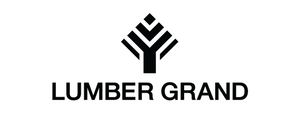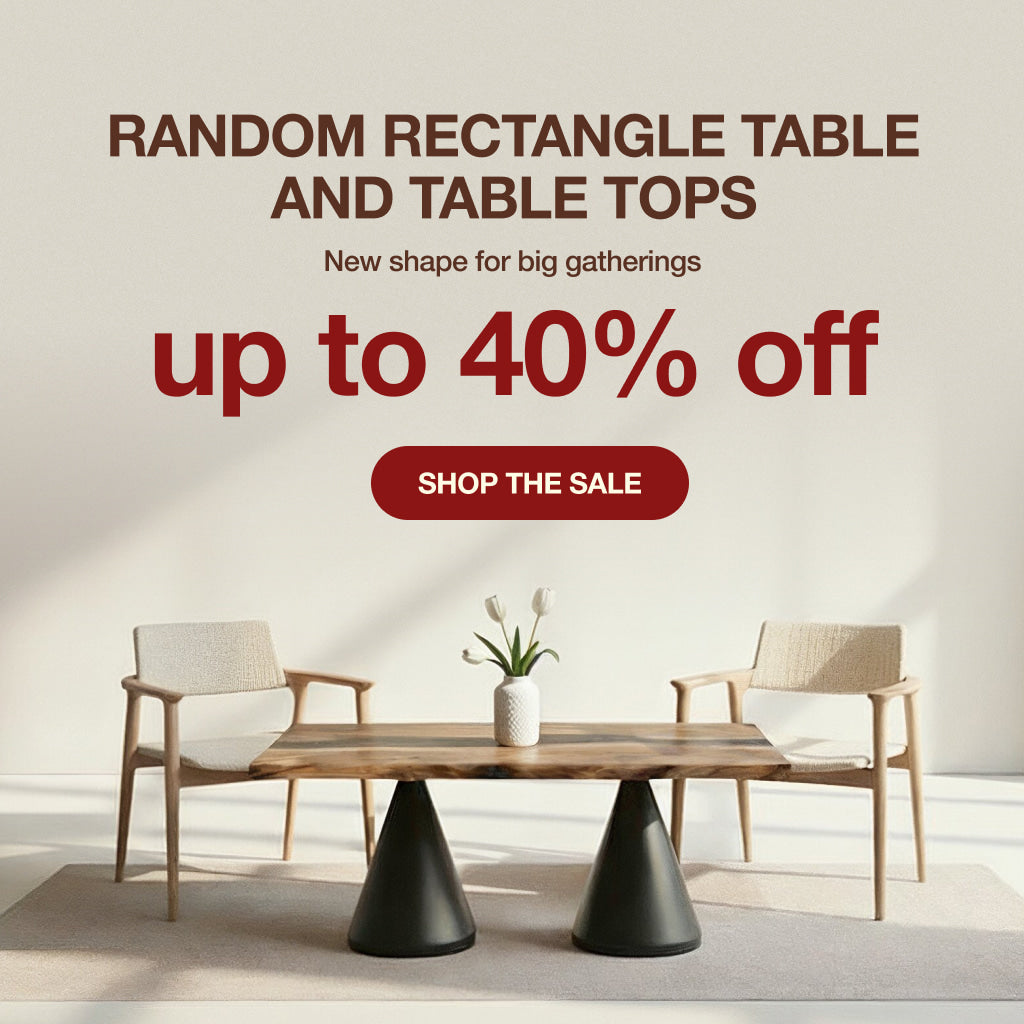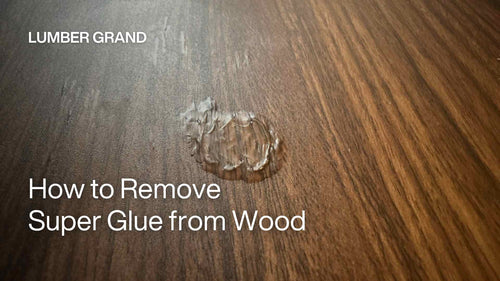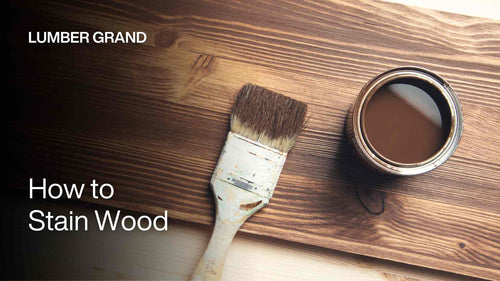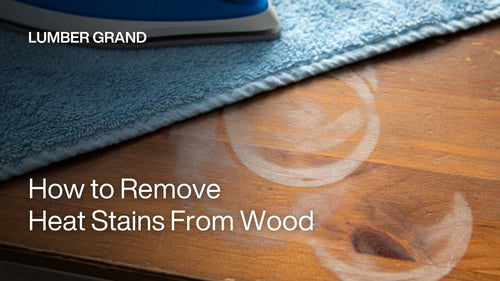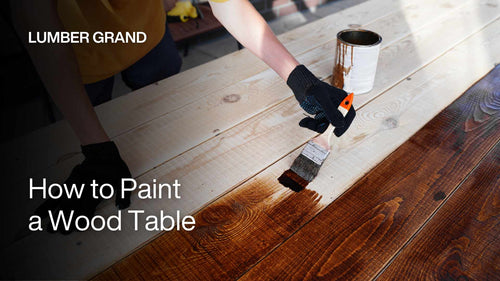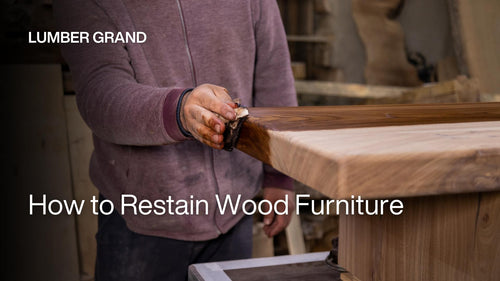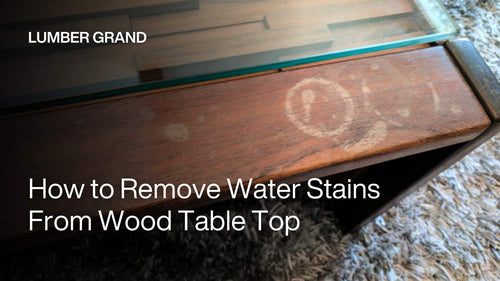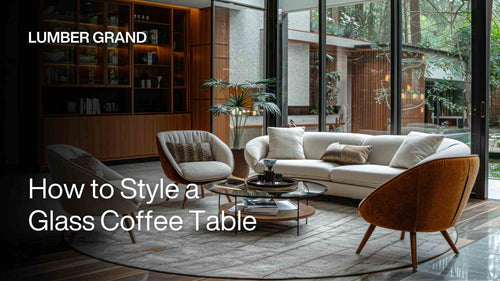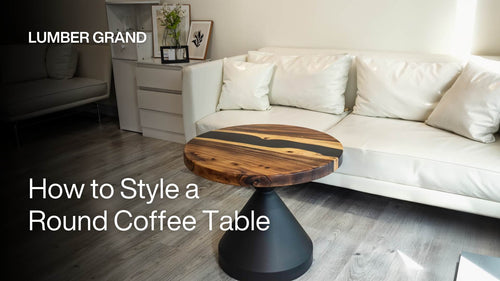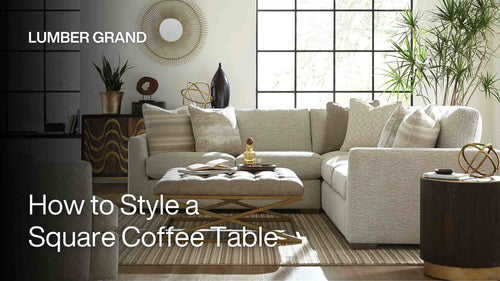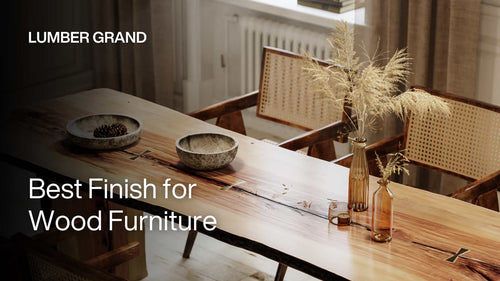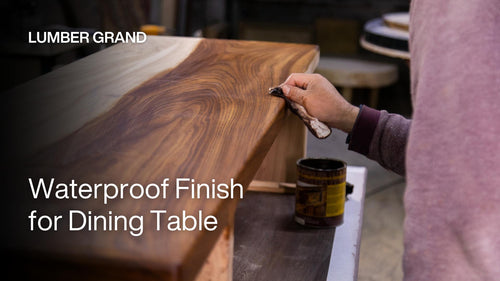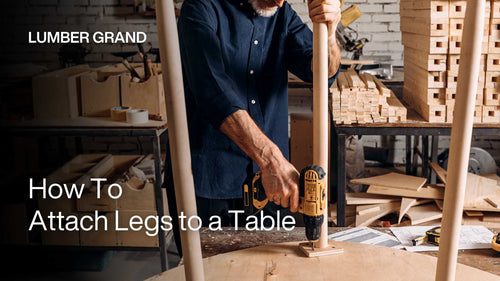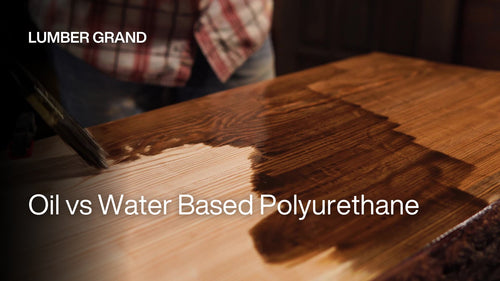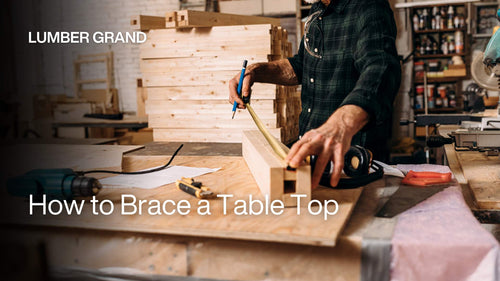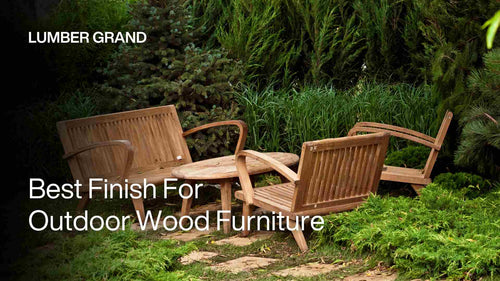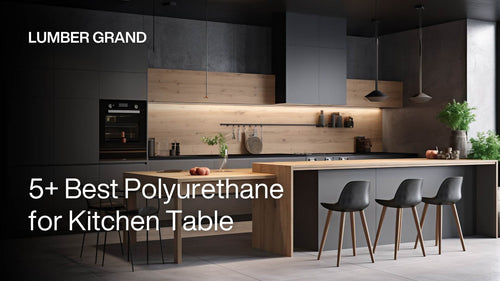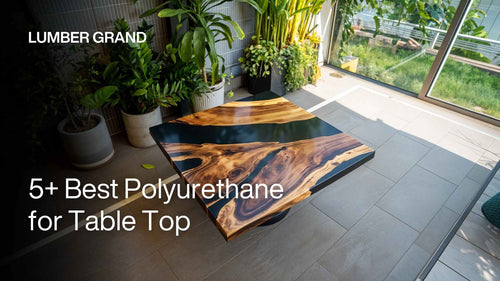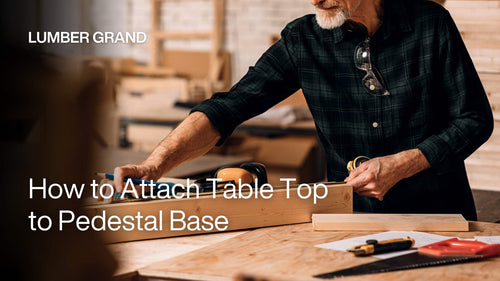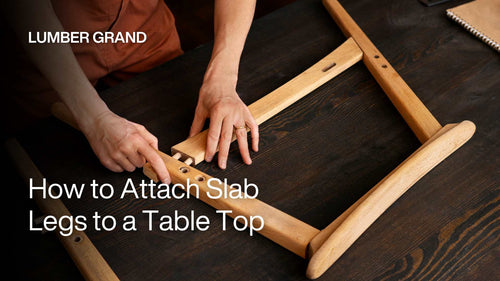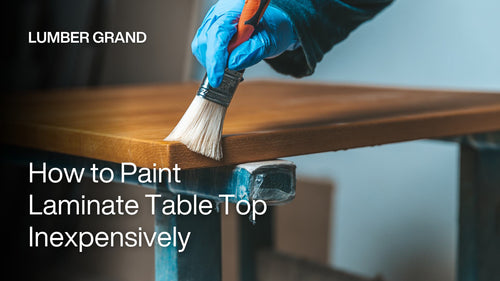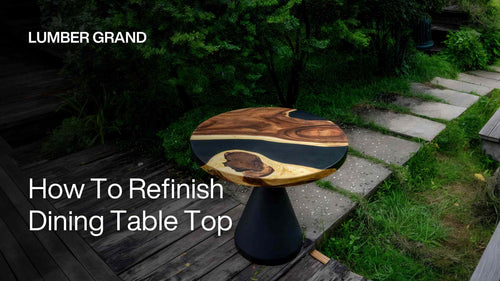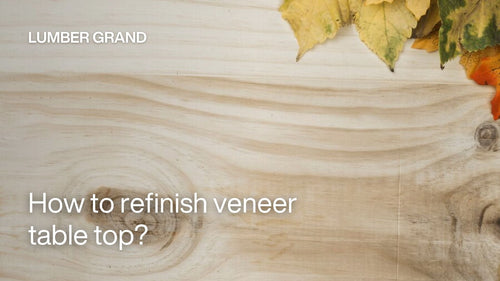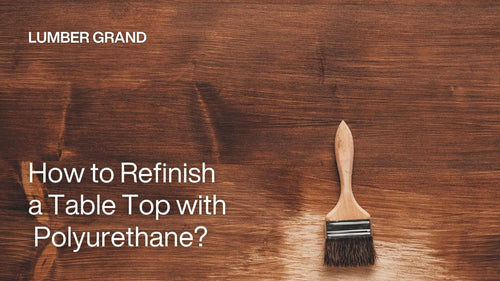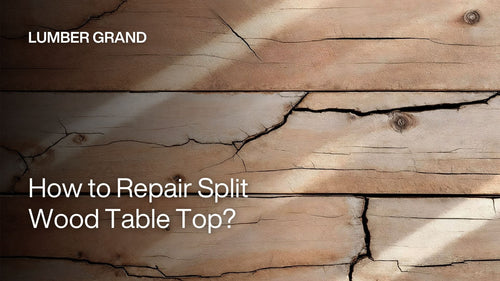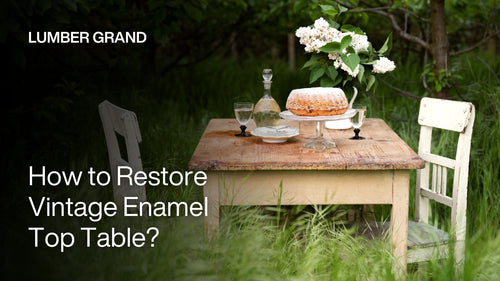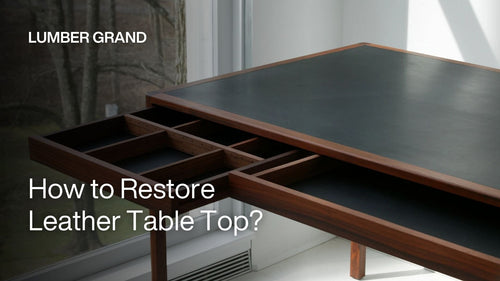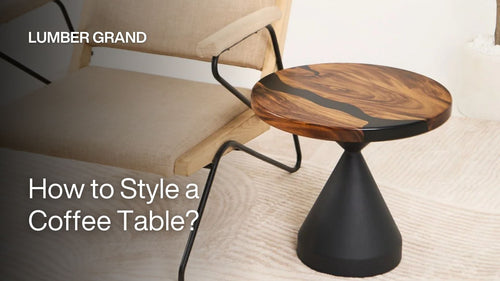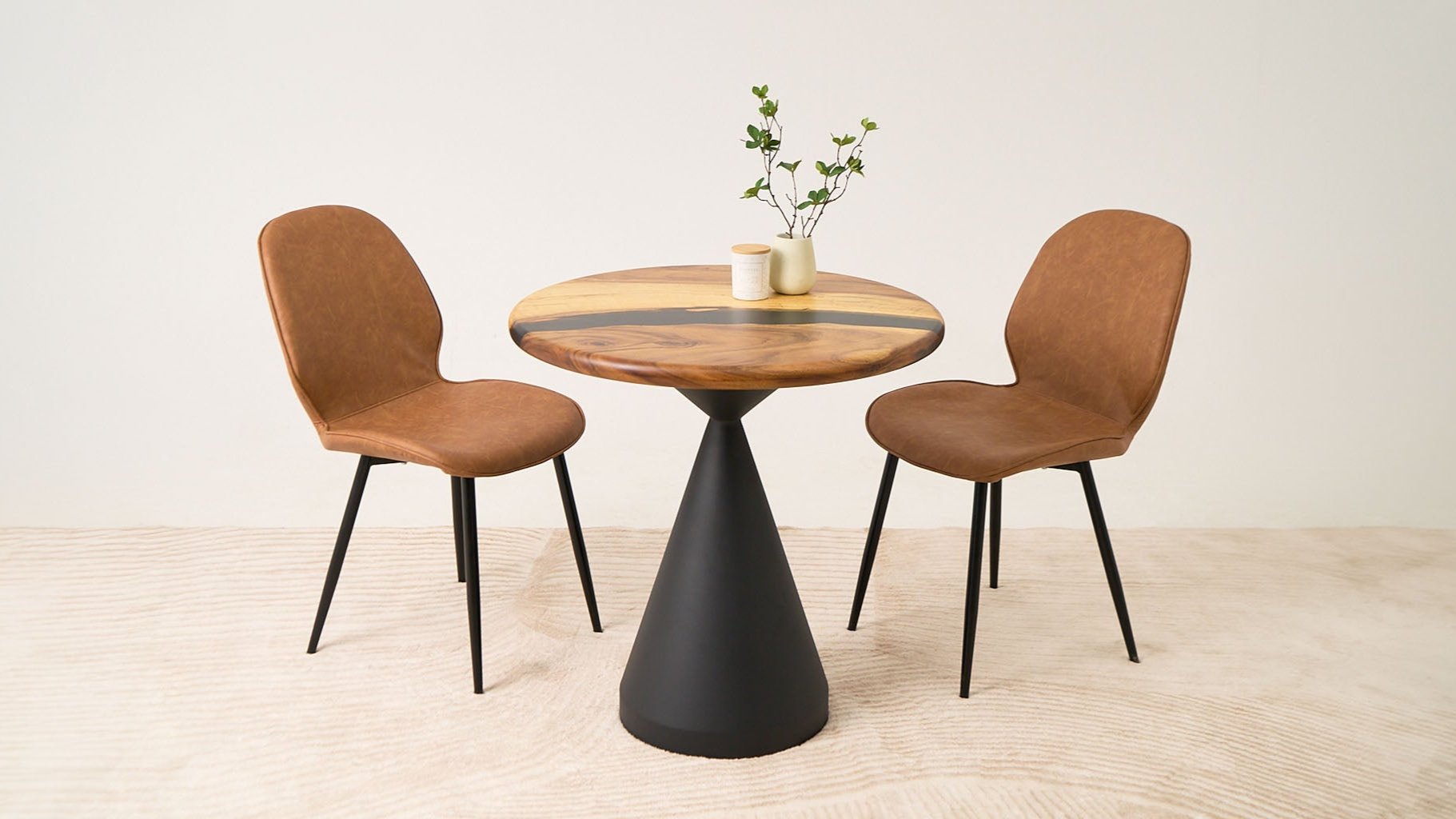You’ll have two main types of the best polyurethane for table top: oil-based and water-based polyurethane.
-
Oil-based takes longer to dry but gives you tougher protection and brings out the wood's natural warmth.
-
Water-based dries faster, has less smell, and stays crystal clear.
Both do a good job of protecting your table, but which one actually meets your requirements? No worries, as Lumber Grand will compare 5+ best polyurethane for table tops to help you find the right one for your table top. Read more!
A Quick Comparison Table of 5+ Best Polyurethane for Table Top
This comparison table gives you a side-by-side look at the top-rated polyurethane on the market, including product, drying time, durability, and price range. If one of these products seems like the right fit, scroll down to explore its key features, pros, and cons in detail. That way, you can make a well-informed choice for picking the best polyurethane finish for table top.
|
Product |
Type |
Drying Time |
Durability |
Price |
|
Minwax Fast Drying Polyurethane |
Oil-based |
4 — 6 hours |
Long-lasting for indoor furniture and dining use |
$48.98/gallon |
|
Minwax Helmsman Spar Urethane |
Oil-based |
At least 4 hours |
Moderate protection from moisture and sunlight |
$58.98/gallon |
|
General Finishes High Performance |
Water-based |
2 — 2.5 hours |
Very durable, holds up well to daily use |
$108/gallon |
|
Varathane Ultimate Polyurethane |
Water-based |
1 — 2 hours |
Good for light to medium use, quick drying |
$138.01/gallon |
|
Minwax Polycrylic Crystal Clear TopCoat |
Water-based |
2 — 3 hours |
Basic scratch and water resistance |
$69.98/gallon |
|
SEAL-ONCE Nano+Poly |
Water-based hybrid |
3 — 4 hours |
Weather-resistant, eco-safe for indoor/outdoor use |
$65.98/gallon |
* We don’t advertise here. All products are based on our experiences. You should double-check the market for the best finish fit.
5+ Best Polyurethane for Table Top that You Should Try
The best clear coat for table top depends on how you use your table and the finish you want. Below are the top 6 must-try oil-based and water-based polyurethanes that work for everything from quick DIY projects to kitchen tables.
1. Minwax Fast Drying Polyurethane: Oil-Based for Quick Indoor Table Top
What we love most about Minwax Fast Drying Polyurethane is that you can put on several coats in one day instead of waiting around for days. The finish always comes out smooth and does a great job protecting the epoxy table top, whether it's brand new lumber or an old piece you're refinishing.
Yet, this best polyurethane for table top has a really strong smell that'll knock your socks off, especially that first coat.
You might like: How to Refinish A Table Top Without Stripping and Sanding

Minwax Fast Drying Polyurethane is a well-known brand for the best polyurethane for kitchen table top
Photo: Family Test Lab
Besides, the protection is usually good, though we've noticed the spray can version doesn't hold up quite as well as the brush-on kind. If you're working on light-colored wood like maple or pine, you might see it turn slightly yellow over time.
Key features:
-
Long-lasting protective layer against scratches, spills, and wear
-
Recoats within 3 — 4 hours for multiple coats in a day
-
Suitable for finished and unfinished interior wood surfaces (furniture, doors, cabinets, floors)
-
Dry clearly to highlight natural wood grain and color
-
Oil-based, enhances wood with a rich, warm tone
-
Available in multiple sheens (e.g., satin, semi-gloss)
-
Apply with brush, foam brush, or lamb’s wool applicator
-
Clean up with mineral spirits or paint thinner
|
Pros |
Cons |
|
|
2. Minwax Helmsman Spar Urethane: Polyurethane for Outdoor Table
Minwax Helmsman Spar Urethane really shines when you're dealing with exterior table tops, doors, window trim, deck railings, or patio furniture that gets beaten up by rain and UV rays. Helmsman brings out the natural beauty of wood while actually protecting it — the grain just pops under this clear finish.

Minwax Helmsman shines when you're dealing with exterior table top doors
Photo: Tap In With Ted
That said, we need to be honest about where this product struggles. If you're thinking about using it on a boat or something that gets absolutely hammered by sun and water all day, you might be disappointed. The oil-based version can get brittle and crack if the wood moves a lot, though the water-based version handles that better.
Key features:
-
Contain UV blockers to reduce sun-related fading and graying
-
Form a barrier against rain and moisture to protect wood
-
Special oils allow the finish to expand and contract with wood
-
Suitable for doors, windows, trim, bathroom cabinets, bar tops, countertops, and outdoor furniture
-
Available in clear gloss, satin, and other finishes to show wood’s natural beauty
-
Oil-based formula for durability and wood penetration
-
Some formulations (e.g., 350 VOC) comply with VOC regulations
|
Pros |
Cons |
|
|
3. General Finishes Water-Based Top Coat: Finish for Light-Colored Indoor Table Tops
Fine Woodworking magazine didn't name it "Best Overall Choice" for nothing — General Finishes High Performance Topcoat is incredibly tough and holds up to daily use better than almost anything else we've tried. What really sets it apart is how it doesn't change the color of your wood. The application is smooth as butter, too.

General Finishes High Performance is a top-rated water-based polyurethane for kitchen
Photo: General Finishes
Whether you're using a brush, roller, or sprayer, this best polyurethane for table top goes on evenly and doesn't leave streaks like some water-based finishes do. We'll be straight with you, though this isn't the cheapest option on the shelf. You're going to pay more for General Finishes, but you get what you pay for.
Their "satin" finish comes out a bit shinier than you might expect, so keep that in mind if you want a really flat look. Also, please consider whether you use this over white paint or very light stains, because it can cause some slight yellowing.
Key features:
-
Extremely durable, resists wear and tear
-
Contain UV stabilizers to prevent sunlight damage
-
Compatible with most water-based and solvent-based stains
-
Low odor, pleasant to work with
-
Fast drying and allows multiple coats quickly
-
Clean up easily with water
-
Available in flat, gloss, satin or semi gloss polyurethane for kitchen table
|
Pros |
Cons |
|
|
4. Varathane Ultimate Polyurethane Water-based: Crystal-Clear Indoor Finish With Low Odor
What our team really appreciates about Varathane Ultimate Water-based Polyurethane is how user-friendly it is. You can apply it in the morning and put on another coat that same afternoon because it dries so fast.

Varathane Ultimate is one of the best polyurethane for table top that you should try
Photo: The Fixer 2
Not to mention, the smell is barely noticeable compared to other best oil based polyurethane for table top in this list. This means you can work inside without your family complaining or having to open every window in the house. The finish stays clear, too, so if you're working on light woods like maple or ash, it won't turn yellow over the years like some other products do.
This isn't the toughest finish out there, and it can show scratches more easily than oil-based polyurethane. Our solution now is to always put on at least three thin coats instead of trying to get away with just two.
Key features:
-
Crystal-clear, non-yellowing finish that shows wood’s natural color and grain
-
Good protection against scratches and stains
-
Low odor, water-based formula suitable for indoor use
-
Durable, long-lasting finish for enhanced wood longevity
|
Pros |
Cons |
|
|
5. Minwax Polycrylic Crystal Clear TopCoat: Polyurethane for Light Indoor Tables
“For light-colored indoor wood projects where you want something quick and easy without strong smells, Minwax Polycrylic does the job, but you need to know its limits. The finish goes on smoothly, dries fast enough that you can get two coats done in one day.” Jimmy, an expert at Lumber Grand, stated.

Our advice is to use Minwax Polycrylic for table top that won't see heavy use
Photo: Generalist Edge
Yet, the product is finicky to work with if you're not careful. The first time our team used it, a staff member shook the can like any other finish and ended up with bubbles all over my project. So, you should stir it gently and use a good synthetic brush to avoid brush marks. The "satin" version also comes out glossier than you'd expect, so keep that in mind.
Our advice is to use this for projects that won't see heavy use, such as bookshelves, decorative pieces, or furniture in bedrooms, where it won't get constant handling. For anything that needs to stand up to daily abuse, spend the extra money on something tougher.
Key features:
-
Crystal-clear, non-yellowing finish that preserves wood or stain color
-
Protect against scratches, spills, dirt, and daily wear
-
Work on bare timber, oil-based, and water-based stains, especially light woods like maple, ash, and birch
-
Fast drying, recoats in as little as 2 hours
-
Water-based formula, cleans up with soap and water
-
Low odor for comfortable application
-
Apply easily with brush, roller, or sprayer
|
Pros |
Cons |
|
|
6. SEAL-ONCE NANO+POLY Premium Wood Sealer
When it comes to protecting outdoor wood with an eco-friendly product that actually works, SEAL-ONCE Nano+Poly has impressed our team more than we expected it would.
The application couldn't be easier either. This best polyurethane for table goes on like water and doesn't require any special techniques or tools. Besides, the company backs it with a 10-year warranty on vertical surfaces and 6 years on horizontal ones, which shows they stand behind their product.

SEAL-ONCE Nano+Poly goes on like water and doesn't require any special techniques or tools
Photo: Lee Klocke
Still, while most of my applications have held up great, I noticed some fading on my front door after about 18 months of direct southern sun exposure. As a result, for the money and environmental benefits, it's worth trying, especially on vertical surfaces like siding and fences where it performs best.
Key features:
-
Penetrate wood fibers at the cellular level to form a long-lasting, water-resistant shield
-
Flexible and breathable, allow wood to expand/contract without cracking or peeling, and let moisture vapor escape
-
Durable finish resists wear and tear, ideal for high-traffic areas
-
Eco-friendly, low-VOC, water-based formula, safe for people, pets, and plants
-
Easy cleanup with soap and water
-
Provide UV protection when used as a stain
-
Prevent wood rot, decay, mold, and mildew
|
Pros |
Cons |
|
|
How to Choose the Best Polyurethane for Table Top: 7 Key Points
Choosing polyurethane is simple once you know what questions to ask yourself. Let's walk through it together.
1. Type of Polyurethane Should You Use
Polyurethane comes in two basic types: water vs oil-based polyurethane for table. Each one works differently and has its strengths.
-
Oil-based polyurethane gives your wood a warm, amber glow. You'll smell it while it dries, and you need mineral spirits to clean your brushes.
-
Water-based polyurethane goes on clear and stays clear. It dries much faster, and there's barely any smell compared to the oil-based option.
2. Choose Polyurethane Based on Your Wood Type
Different woods need different approaches. Here's what works best for each type:
-
Light-colored woods like maple and oak: Water-based polyurethane works best for light woods because it won't change their natural color. Oil-based finishes add an amber tint that might not look right on these lighter woods.
-
Dark-colored woods like walnut and cherry: Oil-based polyurethane brings out the best in dark woods. The amber tone it adds complements their natural richness instead of hiding it.
3. Match Polyurethane to Your Table's Location
The room where you'll use your table determines which type of polyurethane works best.
-
Kitchen and dining tables: You should go with oil-based polyurethane. These tables get hit with spills, hot dishes, and constant use. Oil-based options give you the toughest protection and handle heat better than water-based options.
-
Living room or bedroom tables: Water-based works great in these rooms. You get faster drying times and less smell, plus it only slightly yellows your light-colored wood over time.
-
Outdoor Tables: You need spar urethane (like Minwax Helmsman). Regular polyurethane will crack and peel outside, but spar urethane flexes with the wood and fights off UV damage.
4. Pick the Right Polyurethane Finish
This key is like you’re choosing paint. Do you want shiny, medium, or flat?
-
Satin (medium shine): This is what most people pick. It looks natural and hides small scratches.
-
Gloss (shiny): Easy to wipe clean, but you'll see every fingerprint.
-
Matte (flat): Looks most natural, yet spills might leave marks.
5. Consider Budget and Time
Your budget and schedule affect which type of polyurethane makes sense.
-
Water-based polyurethane costs more money upfront but saves time and hassle. It cleans up with soap and water, and doesn't smell up your house. It lets you apply a second coat in just a few hours. You can finish most tables on the weekend if you start Saturday morning.
-
Conversely, oil-based polyurethane costs less money but requires more work. The strong smell means you need good ventilation. Also, it needs overnight drying between coats. Hence, you should plan on a full week to complete your project, but you'll get a harder, longer-lasting finish.
6. Think about Food Safety
If your table touches food, you should look for products labeled "FDA-compliant" or "safe for food contact." Both oil-based and water-based can be food-safe once they're fully cured:
-
Oil-based polyurethane: Wait 30 days before food contact
-
Water-based polyurethane: Wait 7 — 14 days before food contact
7. Apply Polyurethane for Different Skill Levels
-
For beginners: Wipe-on polyurethane is the safest choice. You can apply it with a clean cloth, like polishing furniture. This method prevents brush marks and is nearly foolproof, though it requires 4 — 6 coats. Each coat goes on smoothly and dries evenly.
-
For experienced users: Regular brush-on polyurethane works well with proper technique. You should use synthetic brushes for water-based products and natural bristle brushes for oil-based finishes. Apply thin, even coats and work at a steady pace to avoid lap marks.
FAQs
1. How Many Coats of Polyurethane Should I Apply to a Table Top?
You should apply at least 3 coats for best protection for dining tables, indoor, or outdoor tables. The first coat soaks into the wood, the second builds thickness, and the third gives you that smooth, durable finish. In case of heavy-use tables like outdoor tables, consider 4 coats.
2. What Is the Most Durable Polyurethane?
Oil-based polyurethane is the most durable option. It creates a harder, thicker protective layer that lasts longer than water-based versions. For table tops that see daily use, oil-based gives you the best bang for your buck.
3. What Is the Best Protective Coating for a Wood Table?
Polyurethane is your best bet for table tops. It's tougher than lacquer, easier to apply than epoxy, and more protective than wax or oil finishes. Hence, you should stick with a quality polyurethane for long-lasting protection.
4. Can I Apply Water-Based Polyurethane Over Oil-Based?
No, don't do this. Water-based polyurethane won't stick properly to oil-based finishes and will peel off. If you want to switch, you'll need to sand down to bare wood or use a special bonding primer first.
5. Can Polyurethane Be Applied Over Stain?
Yes, absolutely. In fact, that's exactly what polyurethane is designed for. Yet, you need to make sure your stain is completely dry first. Normally, usually 24 hours for oil-based stains and 4 — 6 hours for water-based stains.
6. What if I Don't Want to Use Polyurethane on My Table?
You have several good polyurethane alternatives, depending on your needs, but not limited to:
-
Shellac is easy to repair if it gets damaged, though it won't last as long as polyurethane.
-
For outdoor tables or ones near windows, spar urethane works better because it handles water and sun exposure.
-
If you prefer a more natural look, Odie's Wax or Osmo Polyx Oil gives you that smooth, velvety feel and is simple to touch up when needed.
Conclusion — Which is the Best Polyurethane for Table Top?
Want to skip the finishing work? You can also explore our collection of handcrafted epoxy tables, ready to pair with the base of your choice. Also, more DIY wood finishing tips are available on the Lumber Grand blog. They’re all written in detail to help you build confidently.
Sum up, now you’ve seen the top 6 choices for the best polyurethane. Each finish offers different benefits depending on your project.
-
Heavy-use table tops: Oil-based polyurethane in satin finish
-
Light-use table tops: Water-based polyurethane in satin finish
-
Outdoor table tops: Spar urethane
-
First-time users: Wipe-on polyurethane in your preferred type
No matter which one you choose, applying the best polyurethane for table top will extend your table’s life and keep it looking great. Thank you for reading!
